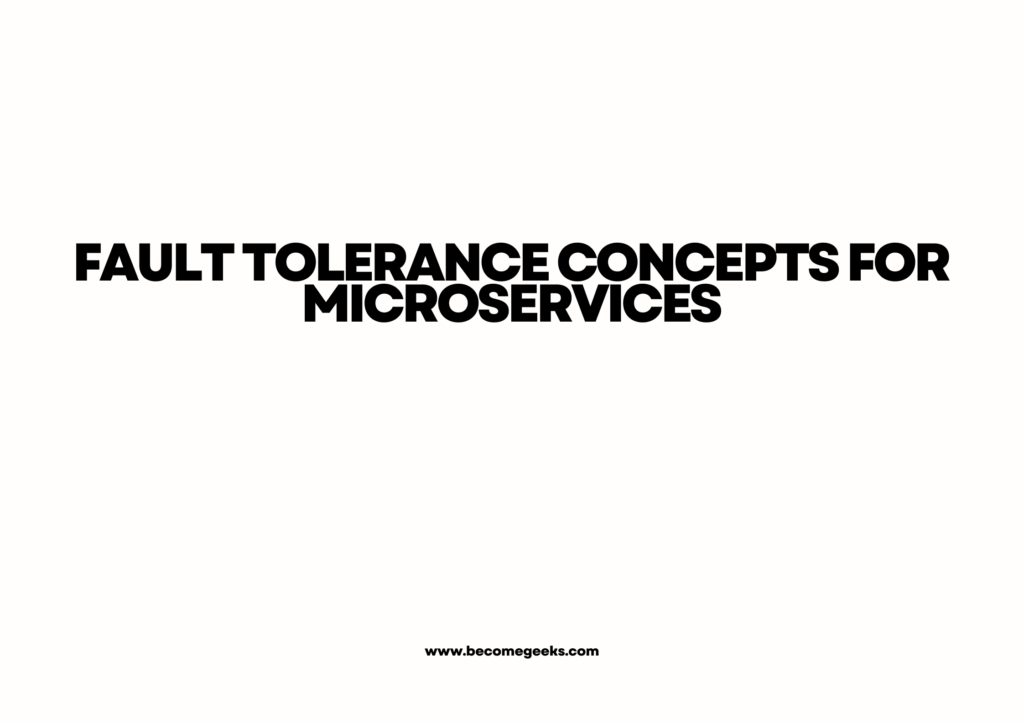Fault Tolerance Concepts for Microservices

Microservices architecture has gained popularity due to its ability to create scalable and highly available applications. However, as microservices interact in a distributed environment, it becomes essential to address the potential failures that can occur. In this article, we will explore key fault tolerance concepts that Java developers should understand when building resilient microservices. By implementing these concepts, developers can ensure their applications are robust and capable of handling failures gracefully.
- Fault Tolerance and Microservices:
Fault tolerance refers to the ability of a system to continue functioning and provide reliable services even when some components or services fail. In microservices, which are designed to be independent and loosely coupled, it is crucial to handle failures effectively to maintain overall system stability and availability.
- Circuit Breaker Pattern:
The Circuit Breaker pattern is a fault tolerance mechanism that helps prevent cascading failures and reduces the impact of a failing service on the entire system. In Java, libraries like Netflix Hystrix and Resilience4j provide circuit breaker implementations. A circuit breaker monitors the availability of a service and, if it detects failures or timeouts, opens the circuit, diverting further requests. It then allows a limited number of requests to pass through to determine if the service has recovered. This pattern helps isolate failing services, maintain system responsiveness, and provide fallback options.
- Bulkhead Pattern:
The Bulkhead pattern aims to isolate failures and limit their impact on other services. It involves separating resources (such as threads or connection pools) for different services or groups of services. By allocating dedicated resources, failures in one service do not exhaust resources that other services depend on. In Java, libraries like Resilience4j and the Spring framework provide support for implementing the Bulkhead pattern.
- Timeout Handling:
Timeouts are essential in microservices to avoid long waiting periods that can lead to poor system responsiveness. By setting appropriate timeouts for requests, services can limit the waiting time and prevent potential failures caused by slow or unresponsive services. In Java, frameworks like Spring Boot provide configurable timeout options when making HTTP requests to other services.
- Retry and Retry Backoff Strategies:
Retry strategies are used to handle transient failures that can occur in microservices. When a request to a service fails, a retry strategy automatically retries the request after a certain interval. Java libraries like Resilience4j and Spring Retry provide mechanisms to define retry policies and backoff strategies. Backoff strategies introduce a delay between retries to avoid overwhelming the service with repeated requests during failures.
- Health Monitoring and Self-Healing:
Health monitoring is crucial for detecting failures in microservices. Each service should expose an endpoint that provides its health status. Java frameworks like Spring Boot have built-in support for health checks. By implementing health monitoring, the system can automatically detect failing services and trigger self-healing mechanisms, such as restarting or replacing the faulty instances.
- Distributed Logging and Monitoring:
Effective logging and monitoring are vital for identifying and diagnosing failures in a distributed system. Java developers should use logging frameworks like Log4j or SLF4J to log relevant information about the system’s behavior, errors, and exceptions. Distributed tracing systems like Zipkin or Jaeger can provide visibility into requests flowing through multiple services, helping to identify performance bottlenecks and failures.





1 Response